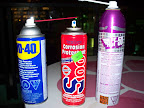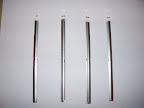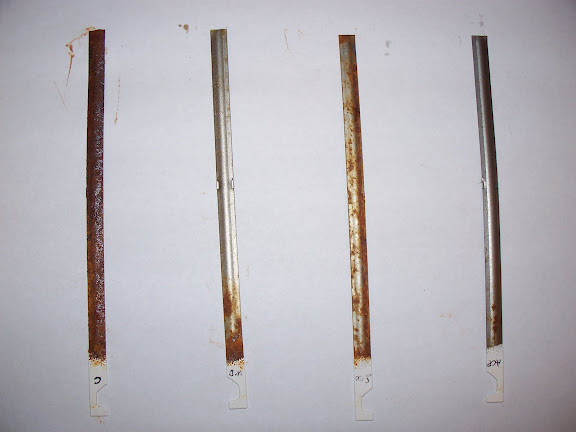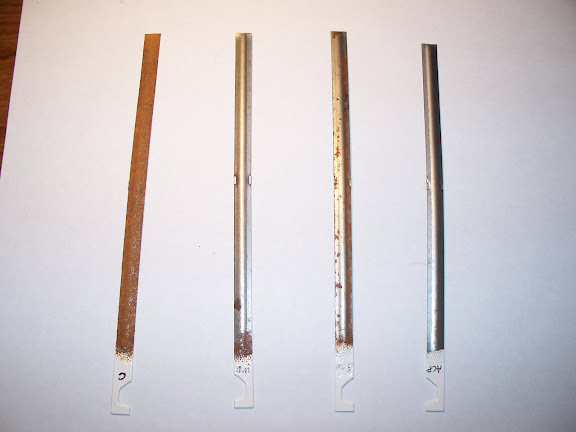After getting my hands on ACF-50 for the first time (check http://www.corrosion-control.com/acf50.html and http://www.corrosionauthority.com for more details) I decided to put it to a test and see how it measures up compared to WD40 and S100 Corrosion Protectant.
I used four pieces of iron extracted from a folder sleeve as test media. They were thoroughly cleaned with gasoline (lighter fuel) and washed with dish soap.
One bar was left untreated as the control subject while others were thoroughly soaked in each of the protectants tested. They are now hung on my terrace fully exposed to elements. I additionally spray them with a mixture of salt and vinegar to speed up corrosion and emulate winter road conditions.


The test is in progress and I'll post the results here in a few weeks. Relevant pictures will be posted here:
http://picasaweb.google.com/vladpic/AntiCorosionTest?authkey=Ufx7C6v15NI
I used four pieces of iron extracted from a folder sleeve as test media. They were thoroughly cleaned with gasoline (lighter fuel) and washed with dish soap.
One bar was left untreated as the control subject while others were thoroughly soaked in each of the protectants tested. They are now hung on my terrace fully exposed to elements. I additionally spray them with a mixture of salt and vinegar to speed up corrosion and emulate winter road conditions.


The test is in progress and I'll post the results here in a few weeks. Relevant pictures will be posted here:
http://picasaweb.google.com/vladpic/AntiCorosionTest?authkey=Ufx7C6v15NI
Last edited:























